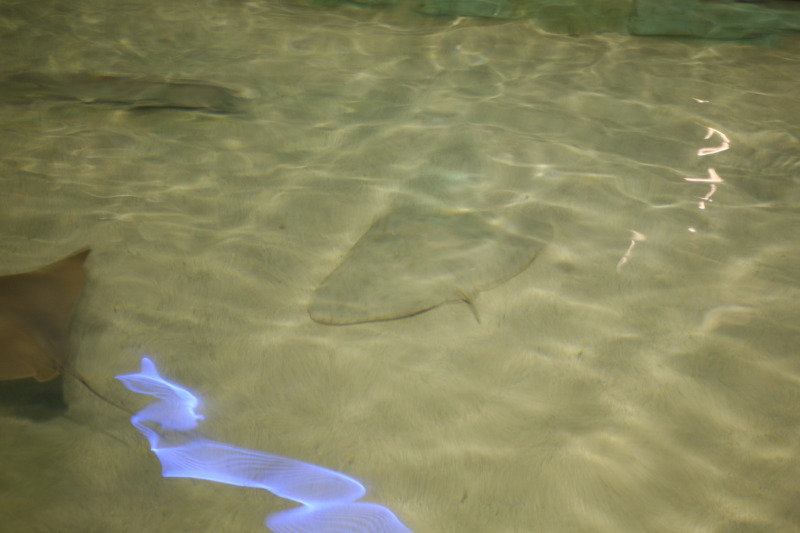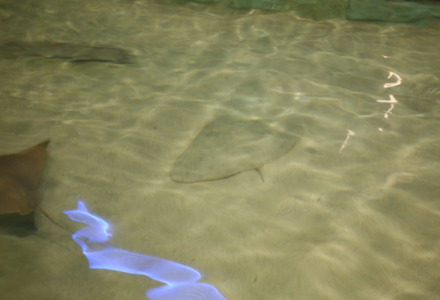
Spiny Butterfly Ray Facts
- This intriguing product of Nature and evolution most frequently goes by the surprising name of the Spiny Butterfly Ray. Yet that isn’t its only general title, though. The remarkable fish is also sometimes called the giant butterfly ray in parts of its range.
- Within scientific circles, however, it’s most typically referred to by its formal name. Fortunately for the layperson, that’s a comparatively simple to pronounce title compared to many. That’s because it bears the official moniker of Gymnura altavela.
- The creature received that appellation due to the efforts of the renowned Swedish zoologist, Carl Linnaeus. He accomplished the first official recognition of it as a separate and distinct species. That scientifically noteworthy event occurred in 1758.
- Regardless of which term one chooses to use when speaking of it, the animal remains an impressive species. It’s generally harmless to humans, though an individual stepping on it may receive a painful wound. Sadly, it’s actively fished in many parts of its range.
- Regrettably, the population base of the awesome Spiny Butterfly Ray appears to be diminishing. That unfortunate state also seems to hold true throughout the entirety of its territory. The IUCN thus currently lists it as Endangered on its published Red List.
- It faces numerous threats to its continued existence as a species. Due to human demand for its flesh, its population has decreased by an estimated 30% in recent decades. It also now faces the same danger posed by climate change as other species.
Related Articles
Spiny Butterfly Ray Physical Description
The Spiny Butterfly Ray clearly merits the appreciation it receives from many who encounter it in the wild. The appearance of the animal certainly qualifies as one reason for that notice. It’s also worth mentioning that it impresses the viewer with its measurements, too.
The creature further displays a certain degree of the phsyiological characteristic of sexual dimorphism. In its specific case, that trait manifests itself in terms of pure physical size. More precisely, females of the species attain a larger average size than the males do.
That gender-based difference, though, remains relatively minor. Overall, mature adults reach an average body width equaling roughly 6.56 ft (2 m). Exceptional specimens do naturally occur, however. Even these, though, rarely exceed these dimensions by any great amount.
The body structure has been described as lozenge-shaped. That’s due to the fact that it’s significantly broader than long. Its disk also generally displays a combination of strongly rounded corners and concave front margins. The tail, though, develops as short and slender.
The snout of the Spiny Butterfly Ray also presents as short, as well as relatively blunt. It has large numbers of small, conical teeth in the mouth. The mouth is also bordered on each side by a unique, tentacle-like appendage. Several serrated spines appear at the base of the tail.
In coloring, the skin commonly presents a background of dark brown on the upperside. Small spots, of either a darker or lighter shade, occasionally appears, too. These markings often show a marbled pattern. On the belly, the skin typically manifests an off-white shade.
- Kingdom: Animalia
- Phylum: Chordata
- Class: Chondrichthyes
- Order: Myliobatiformes
- Family: Gymnuridae
- Genus: Gymnura
- Species: G. altavela
Spiny Butterfly Ray Distribution, Habitat, and Ecology
The Spiny Butterfly Ray evolved a native to a region of the earth’s oceans that doesn’t surprise many who learn of it. That’s true since it developed as endemic to part of the Atlantic Ocean. Within that greater area, however, it lives in tropical and temperate waters.
Yet inside of that range, its distribution remains best described as scattered and spotty. In the western part of its range, it lives as far as Massachusetts, in the United States. To the south, its range extends as far as Argentina, in South America. It’s rare in the Gulf of Mexico.
It further displays extremely specific preferences regarding its choice of habitats. These severely limit is expansion possibilities. It appears only in shallow coastal waters, in many cases brackish in nature. On the Virginia coast, it’s common in the mouths of tidal creeks.
These regions must also possess yet another attribute for it to live there. That’s the presence of either muddy substrates or soft, sandy bottoms. It’s unknown at depths exceeding 328 ft (100 m). Many, in fact, often appear at depths measuring no more than 16 ft (5 m).
Like its relatives, the Spiny Butterfly Ray feeds as a pure carnivore. Its precise prey varies, depending on the exact region in which it lives. In general, though, it feeds on such creatures as squid, small sharks, fish, gastropods and crustaceans. It also hunts as an active predator.
Its own predators, however, remain relatively few in number. This most commonly includes larger sharks and marine mammals. Females give birth to live young, usually numbering up to eight. Lifespan varies, of course, but tends to average approximately eight years.
Species Sharing Its Range
Check out our other articles on 4 Phenomenal Philippine’s Reptiles, Striped Skunk, Gobi Desert, Southern Plains Bumblebee, Kinnikinnick, Southern Darwin’s Frog

